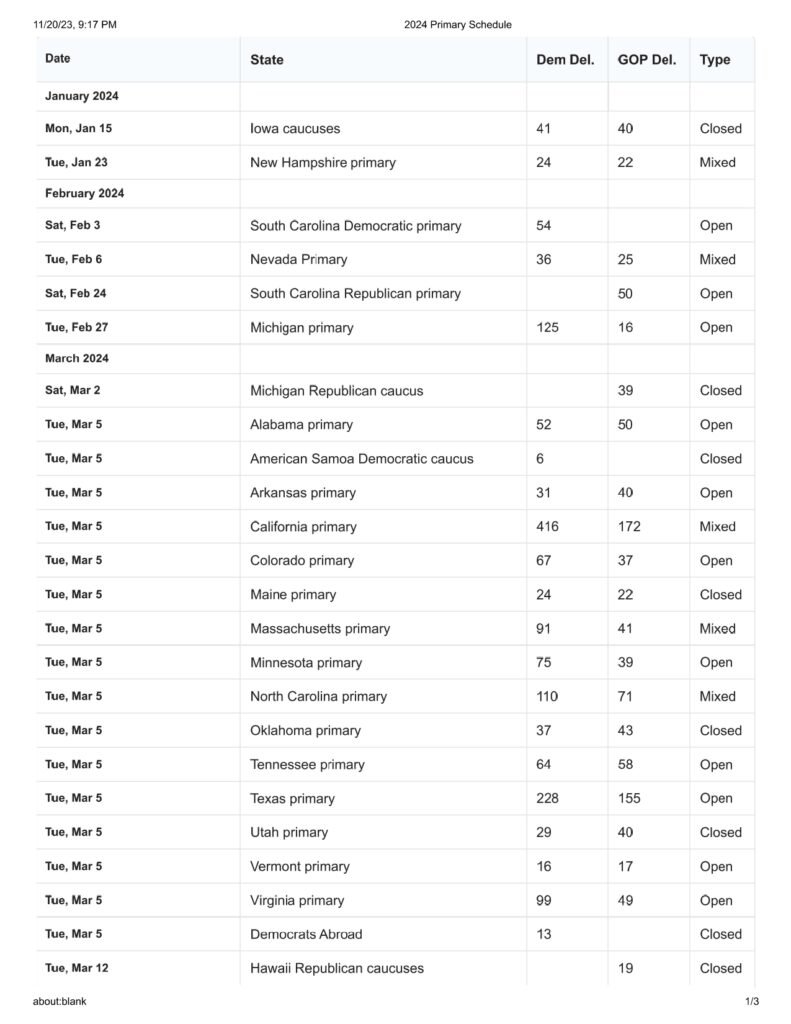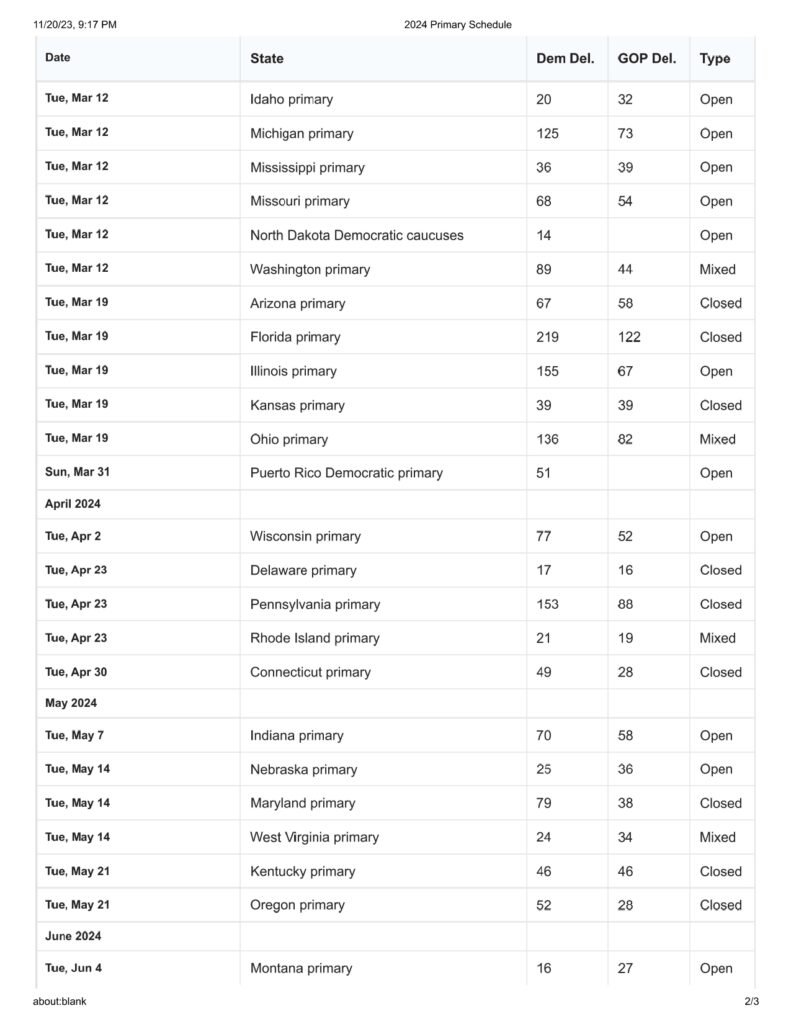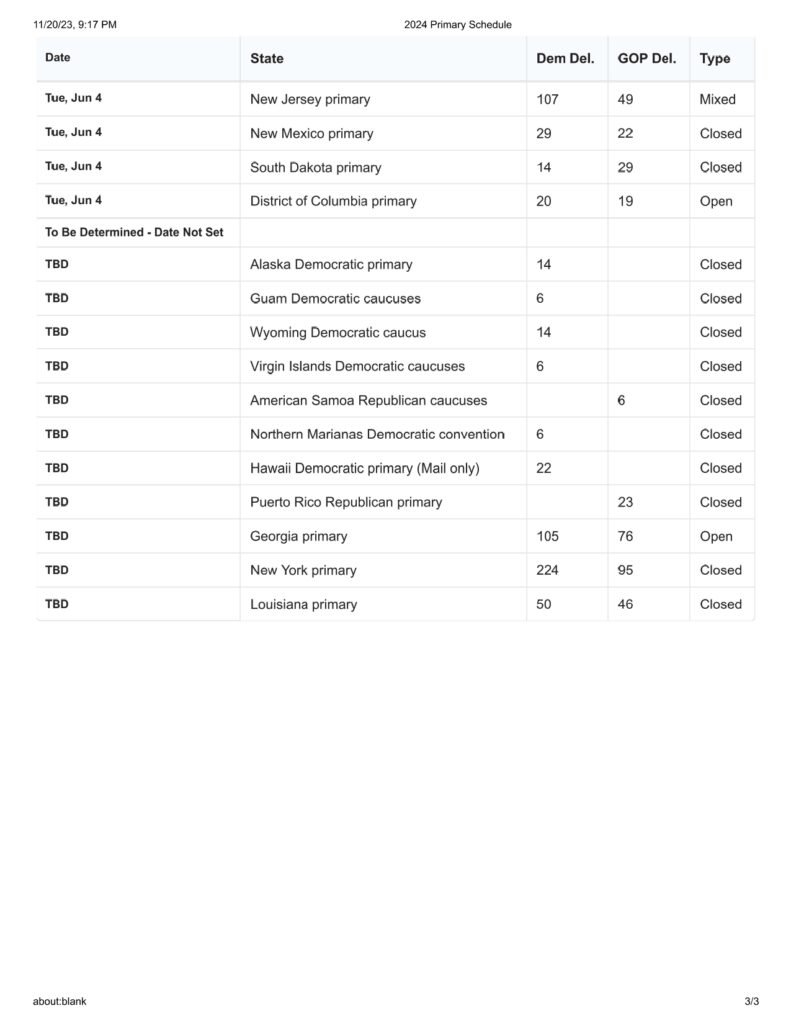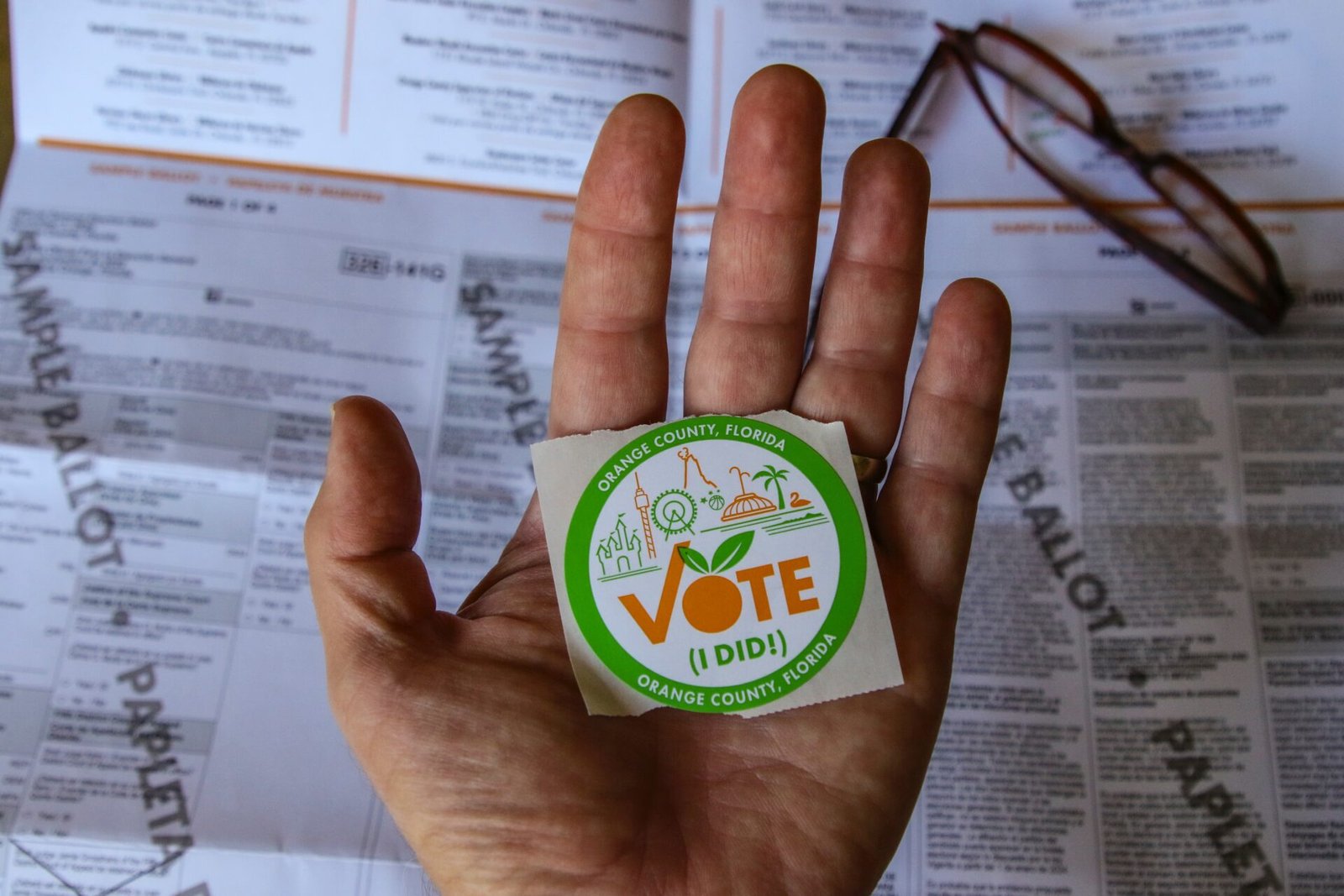The 2024 presidential primary schedule serves as a roadmap for the nomination process, detailing when each state will hold its primary or caucus for Democrats and Republicans. Beginning with the Iowa caucuses and concluding on November 5, 2024, this schedule 2024 Presidential Primary Schedule by State is crucial for understanding the sequence of events leading up to the presidential election.
The Importance of the Primary Schedule
The primary schedule plays a crucial role in determining the presidential nominees for each political party. It sets the stage for the candidates to showcase their strengths and appeal to voters across the country. By understanding the primary schedule, political analysts and voters alike can gauge the momentum and viability of each candidate’s campaign.
The Early States
The primary season traditionally kicks off with the early states, which often have a significant impact on the overall race. These states include Iowa, New Hampshire, Nevada, and South Carolina.
- Iowa: The Iowa Caucus is the first major event of the primary season. It usually takes place in early February and serves as an important indicator of a candidate’s grassroots support.
- New Hampshire: Following Iowa, the New Hampshire primary is the first official primary election. Historically, winning in New Hampshire has been seen as a crucial step towards securing the party’s nomination.
- Nevada: Nevada’s diverse population makes it an important state for candidates to demonstrate their appeal to different demographics. The Nevada Caucus typically takes place shortly after the New Hampshire primary.
- South Carolina: South Carolina holds the first primary in the South, offering candidates an opportunity to gain support among African-American voters. It usually takes place towards the end of February.
Super Tuesday: A Pivotal Moment
After the early stages, the primary schedule becomes more crowded, with multiple states holding their primaries on the same day. The most significant of these days is Super Tuesday, which is often a make-or-break moment for many campaigns.
Super Tuesday: Super Tuesday, usually held in early March, sees a large number of states, including California and Texas, holding their primaries. This day often determines the front-runners for each party.
Following Super Tuesday, the primary schedule continues with a mix of states, each with its own unique demographics and political landscape. Some states to watch out for include:
- Florida
- Michigan
- Pennsylvania
- Ohio
- North Carolina
- Wisconsin
These states are known for their swing state status and can have a significant impact on the general election.
2024 Primary Schedule



Fluid Dates and DNC Rule Violations
Despite the tentative nature of the schedule, some states have yet to confirm their voting days. Complicating matters further, changes in the Democratic primary calendar have created uncertainty, particularly in states like Iowa and New Hampshire. These states, once considered early in the process, face challenges as they seek to maintain their relevance while violating DNC rules.
Divergent Paths: Republicans vs. Democrats
In 2024, Republicans adhere to the traditional path through Iowa, New Hampshire, Nevada, and South Carolina. In contrast, Democrats have chosen South Carolina and Michigan as their starting points. This divergence in initial primary states reflects the distinctive strategies and priorities of each party.
Primary/Caucus Types: Open, Closed, and Mixed Formats
The types of primaries and caucuses vary, influencing who can participate and how. Open primaries allow voters to choose either party’s primary, regardless of their registration. Closed primaries restrict participation to registered party members, emphasizing party loyalty. Mixed primaries create a more flexible environment, allowing unaffiliated voters to choose a primary or switch their registration on the day of voting.
Delegate Allocation Methods: Proportional vs. Winner-Take-All
Delegate allocation methods differ significantly between Democratic and Republican primaries. In Democratic contests, delegates are proportionally distributed based on candidates’ percentage shares of the vote. Meanwhile, Republican primaries follow a winner-take-all approach, where the candidate Overview with the most votes in a state claims all available delegates. Variations include winner-take-most, proportional allocation, and the presence of unbound delegates, who have the freedom to support any candidate.
This intricate interplay of dates, rules, and strategies continues to shape the 2024 presidential primary season, with ongoing updates influencing voting schedules, times, and delegate awards.
Conclusion
Understanding the 2024 presidential primary schedule by state is essential for anyone interested in the upcoming election. By following the order of primaries and key states, we can gain insights into the candidates’ strategies and the potential outcomes of the race. Stay informed, stay engaged, and let the democratic process unfold.
